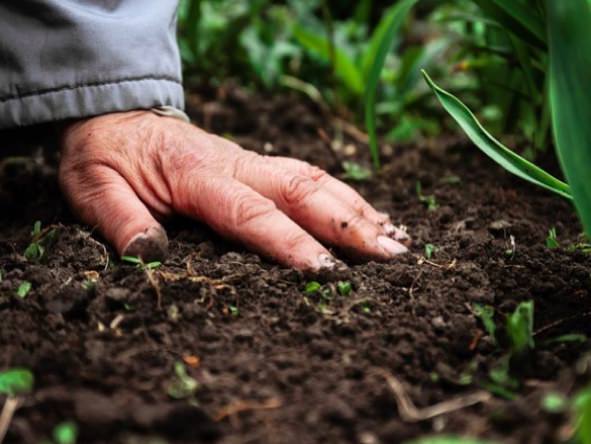Regenerative Agriculture: Farming for the Future
 The food culture of our nation is in a crisis. Let that thought sink in for a moment. The evidence is overwhelming. From the foods we eat to how we grow them, a change needs to happen. We eat far too few vegetables and far too much sugar and unhealthy saturated fats. Additionally, our food choices tend to support unsustainable and unhealthful farming practices (think GMOs and chemicals). That means that the unhealthy food we eat is becoming even unhealthier. What’s the solution then? How can we help to restore and support a healthier and more diverse food culture in this country? The answer: regenerative agriculture.
The food culture of our nation is in a crisis. Let that thought sink in for a moment. The evidence is overwhelming. From the foods we eat to how we grow them, a change needs to happen. We eat far too few vegetables and far too much sugar and unhealthy saturated fats. Additionally, our food choices tend to support unsustainable and unhealthful farming practices (think GMOs and chemicals). That means that the unhealthy food we eat is becoming even unhealthier. What’s the solution then? How can we help to restore and support a healthier and more diverse food culture in this country? The answer: regenerative agriculture.
Regenerative Agriculture: Helping the Environment
One obvious and simple answer which we often hear is to eat healthier foods. Another not-so-simple answer lies in a style of farming called regenerative agriculture. This farming practice is one that goes beyond traditional organic. Regenerative agriculture is not just about avoiding GMOs and harmful chemicals (i.e. pesticides, artificial fertilizers, etc.). It also seeks to actively improve the health and vitality of the land and environment, and thus the food that is grown in it.
The holistic approach of regenerative agriculture produces healthier, more diverse soil and even helps to combat global climate change. Modern, industrial agriculture has devastated our environment. It has depleted our soils and caused significant damage to our ecosystems. While many things in this world can be successfully and sustainably industrialized, agriculture is not one of them.
The techniques used in regenerative agriculture respect the distinct rhythms of nature rather than trying to bend nature to its will, such as in the case of GMOs. Through this practice, CO2 in the environment is actually captured and stored in the soil. This CO2 then serves to nourish the crops. Prior to industrialization, humans had always farmed in this way that created harmony with the environment. Regenerative agriculture is a tried and true solution to our climate problem.
Healthier Soil, Healthier Food
J.I. Rodale, a pioneer of organic agriculture once wrote, “healthy soil = healthy food = healthy people.” Regenerative agriculture aims to put his wisdom into practice. Industrial agriculture, on the other hand, relies on chemical fertilizers, which create imbalances in the soil and deplete its nutrients. The food grown in this impoverished soil is less resilient and so requires more chemicals to remain alive. It is a vicious cycle that ultimately results in less nutritious food and thus less healthy people.
Soil fertility is the top priority in regenerative agriculture. These farms work to restore the soil to a more natural and balanced state. Regenerative agriculture employs concepts like crop rotation, compost, and cover crops, all of which are vital to creating a healthy, bio-diverse soil. Not only are these crops more resilient to disease, but they are substantially more nutritious.
The vision of regenerative agriculture even extends beyond the vegetables, fruits, and other plants that we eat. It also promotes a holistic approach to raising livestock. Animals of regenerative farming can help combat climate change in a similar way to plants. Although they emit CO2 into the environment, livestock of regenerative farming help offset that when raised on pasture. Their grazing allows the grasses to grow deeper roots and trap more CO2 in the soil. Compared to the greenhouse-gas emissions of conventional livestock, it’s certainly an improvement.
Regenerative Agriculture and You
Regenerative agriculture is an essential component in creating a healthier food culture. There are many ways for you to support this worthwhile movement:
- Purchase brands that advocate for and source from regenerative farms. Let them know you’re glad they support this practice. Here are just a few that do:
- Nature’s Path
- Lotus Foods
- Dr. Bronner’s
- Guayaki
- Herb Pharm
- Alter Eco
- Buy from small, local farms that follow the principles of regenerative agriculture. If you’re not sure, just ask. Most farmers are more than happy to talk about their techniques.
- Grow your own food and help regenerate the soil in your own yard!
- Contact your elected officials and ask them to create and support legislation that will help advance regenerative agriculture in this country.
